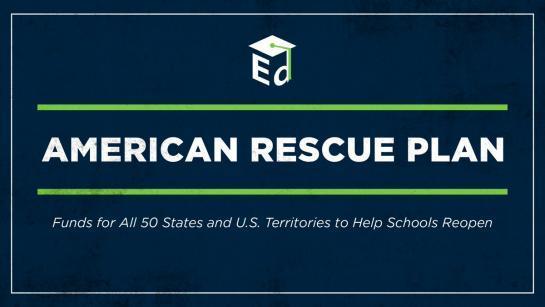In late December, the U.S. Department of Education (DOE) released a very brief Frequently Asked Questions (FAQ) sheet to dispel confusion around how American Rescue Plan Act (ARP) dollars should and are being spent.
The new FAQ adds on to guidance released in May and clarifies questions raised in the wake of Secretary of Education Miguel Cardona’s December letter that urged school districts to use ARP funds to alleviate the current teacher shortage. That letter suggested that districts consider using ARP funds to hire additional educators and staff, increase educator compensation to persuade teachers to remain in their jobs, build and maintain a cadre of high-quality substitute teachers, support staff well-being, and make investments in the educator pipeline. There was no mention of other uses of ARP funding, including professional development.
The most recent FAQ provides a more fulsome explanation of how school districts can use ARP dollars that is not focused solely on addressing the educator shortage. The DOE states in the FAQ sheet that ESF’s general purpose is to “prevent, prepare for, and respond to” COVID-19. It also highlights this statement from the original use of funds guidance to emphasize the broad range of services for which school districts can use ARP dollars: “These Federal emergency resources are available for a wide range of activities to address diverse needs arising from or exacerbated by the COVID-19 pandemic, or to emerge stronger post-pandemic, including responding to students’ social, emotional, mental health, and academic needs and continuing to provide educational services as States, LEAs, and schools respond to and recover from the pandemic.”
In the new FAQ document, the department makes clear that its overriding guidance to school districts is to use these funds to make educational systems better for students, educators, staff, schools and their communities post-pandemic. In the document, DOE encourages SEAs and LEAs to take a holistic approach in their response to COVID-19 so that nothing will impede recovery from the pandemic.
The document also provides the allowable activities for preventing, preparing for and responding to the pandemic, which include:
- Addressing social, emotional, mental health and academic needs through such activities as providing mental health services and supports to students, programs to re-engage students, continuing to address issues of digital equity and access, and implementing rigorous curricula.
- Ensuring that students have access to teachers and critical staff needed to support their success through hiring more educators and improving compensation to recruit and retain all school staff.
- Sustaining and expanding existing summer learning and enrichment programming or early childhood education programs.
- Creating or improving existing data systems and collection to identify and respond in a timely manner to student needs.
- Supporting the needs of children with disabilities, under the Individuals with Disabilities Education Act (IDEA), such as by eliminating evaluation backlogs and providing support and direct services to these children, including technical assistance, personnel preparation and professional development.
- Providing educational and related services to students with disabilities under Section 504 of the Rehabilitation Act of 1973 who are not eligible for services under IDEA.
- Maintaining healthy facilities, which would include addressing pre-existing or new ventilation, roofing and plumbing needs, or other needs that may inhibit healthy learning environments during full-time, in-person learning.
The full document can be accessed here.

